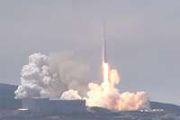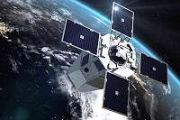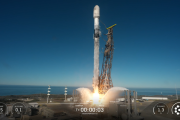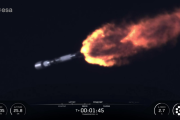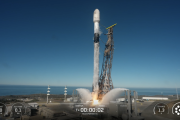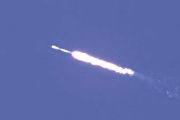
Copernical Team
AI model improves accuracy of atmospheric delay prediction for astronomy and geodesy
 Researchers at the Xinjiang Astronomical Observatory of the Chinese Academy of Sciences have developed a hybrid deep learning model that significantly enhances the accuracy of atmospheric delay prediction-a key factor affecting both astronomical observations and geodetic measurements.
Electromagnetic waves slow as they pass through the Earth's atmosphere due to variations in air density an
Researchers at the Xinjiang Astronomical Observatory of the Chinese Academy of Sciences have developed a hybrid deep learning model that significantly enhances the accuracy of atmospheric delay prediction-a key factor affecting both astronomical observations and geodetic measurements.
Electromagnetic waves slow as they pass through the Earth's atmosphere due to variations in air density an China's satellite network group advances Beidou-internet integration
 China Satellite Network Group Co Ltd is accelerating the integration of satellite internet with the Beidou Navigation Satellite System, emphasizing the dual role of the company as both an innovator and a national infrastructure leader.
Liang Baojun, general manager of China Satellite Network Group, said the company is driving forward the development of satellite internet while focusing on
China Satellite Network Group Co Ltd is accelerating the integration of satellite internet with the Beidou Navigation Satellite System, emphasizing the dual role of the company as both an innovator and a national infrastructure leader.
Liang Baojun, general manager of China Satellite Network Group, said the company is driving forward the development of satellite internet while focusing on China deploys sixth batch of Spacesail communications satellites
 China has launched 18 communications satellites from the Taiyuan Satellite Launch Center in Shanxi province, marking the sixth deployment phase of the growing Spacesail Constellation network.
The satellites, built by the Shanghai-based Innovation Academy for Microsatellites under the Chinese Academy of Sciences, were launched on Friday afternoon aboard a Long March 6A rocket at 3:08 pm. Th
China has launched 18 communications satellites from the Taiyuan Satellite Launch Center in Shanxi province, marking the sixth deployment phase of the growing Spacesail Constellation network.
The satellites, built by the Shanghai-based Innovation Academy for Microsatellites under the Chinese Academy of Sciences, were launched on Friday afternoon aboard a Long March 6A rocket at 3:08 pm. Th WVU engineers recalibrate radio telescopes to illuminate dark energy
 Scientists know dark energy makes up about 70% of the universe and is responsible for the universe's accelerating expansion. Beyond that, little about it is certain, so WVU engineer Kevin Bandura is enhancing the calibration of radio telescopes that can tell astronomers about dark energy by measuring the "neutral hydrogen" in the universe, a simple form of hydrogen with no net electric charge.
Scientists know dark energy makes up about 70% of the universe and is responsible for the universe's accelerating expansion. Beyond that, little about it is certain, so WVU engineer Kevin Bandura is enhancing the calibration of radio telescopes that can tell astronomers about dark energy by measuring the "neutral hydrogen" in the universe, a simple form of hydrogen with no net electric charge. Quantum sensor networks enhance search for elusive dark matter
 Dark matter remains one of physics' most enduring mysteries, yet researchers at Tohoku University have developed a promising new strategy to detect it-by linking quantum sensors into sophisticated network structures.
These quantum sensors, based on superconducting qubits, can pick up incredibly faint signals that ordinary detectors would miss. By organizing the qubits into optimized networ
Dark matter remains one of physics' most enduring mysteries, yet researchers at Tohoku University have developed a promising new strategy to detect it-by linking quantum sensors into sophisticated network structures.
These quantum sensors, based on superconducting qubits, can pick up incredibly faint signals that ordinary detectors would miss. By organizing the qubits into optimized networ Most massive stars in the early universe were likely born as binaries
 A new study from Tel Aviv University's School of Physics and Astronomy suggests that most massive stars formed in the early universe were born in pairs, echoing patterns seen among massive stars in our own Milky Way. The finding provides the first strong evidence that binary star formation was common in the early cosmos-an insight that reshapes understanding of how black holes, supernovae, and h
A new study from Tel Aviv University's School of Physics and Astronomy suggests that most massive stars formed in the early universe were born in pairs, echoing patterns seen among massive stars in our own Milky Way. The finding provides the first strong evidence that binary star formation was common in the early cosmos-an insight that reshapes understanding of how black holes, supernovae, and h Dark matter returns as leading explanation for galactic gamma ray glow
 A new study has reignited the long-running debate over what causes the mysterious gamma-ray glow emanating from the Milky Way's center, suggesting that dark matter may once again be the most plausible explanation.
Led by Dr. Moorits Muru, with Dr. Noam Libeskind and Dr. Stefan Gottlober from the Leibniz Institute for Astrophysics Potsdam (AIP), in collaboration with Professor Yehuda Hoffma
A new study has reignited the long-running debate over what causes the mysterious gamma-ray glow emanating from the Milky Way's center, suggesting that dark matter may once again be the most plausible explanation.
Led by Dr. Moorits Muru, with Dr. Noam Libeskind and Dr. Stefan Gottlober from the Leibniz Institute for Astrophysics Potsdam (AIP), in collaboration with Professor Yehuda Hoffma China commissions world's first mid-infrared solar magnetic-field telescope
 The National Astronomical Observatories of the Chinese Academy of Sciences (NAOC) has announced that the world's first telescope dedicated to measuring solar magnetic fields in the mid-infrared band has passed its final acceptance review and is now fully operational.
Known as the Accurate Infrared Magnetic Field Measurements of the Sun (AIMS), the telescope marks a breakthrough in global s
The National Astronomical Observatories of the Chinese Academy of Sciences (NAOC) has announced that the world's first telescope dedicated to measuring solar magnetic fields in the mid-infrared band has passed its final acceptance review and is now fully operational.
Known as the Accurate Infrared Magnetic Field Measurements of the Sun (AIMS), the telescope marks a breakthrough in global s Signals from the dawn of time may reveal secrets of the Big Bang
 For centuries, humans have sought to understand how the universe began. Now, researchers at the Max Planck Institute for Physics (MPP) and the Institut d'Astrophysique de Paris are proposing new ways to peer further back than ever before-toward the first instants following the Big Bang.
Physicists Leo Stodolsky of MPP and Joseph Silk of the Institut d'Astrophysique de Paris have developed
For centuries, humans have sought to understand how the universe began. Now, researchers at the Max Planck Institute for Physics (MPP) and the Institut d'Astrophysique de Paris are proposing new ways to peer further back than ever before-toward the first instants following the Big Bang.
Physicists Leo Stodolsky of MPP and Joseph Silk of the Institut d'Astrophysique de Paris have developed Asteroid with Second-Fastest Orbit Discovered Hidden in Sunlight
 A newly discovered asteroid has been found racing around the Sun in just 128 days, making it the Solar System's second-fastest known orbiting asteroid. Designated 2025 SC79, the object was detected by Carnegie Science astronomer Scott S. Sheppard on September 27, concealed within the Sun's glare-an area notoriously difficult to observe.
The asteroid's path takes it inside the orbit of Venu
A newly discovered asteroid has been found racing around the Sun in just 128 days, making it the Solar System's second-fastest known orbiting asteroid. Designated 2025 SC79, the object was detected by Carnegie Science astronomer Scott S. Sheppard on September 27, concealed within the Sun's glare-an area notoriously difficult to observe.
The asteroid's path takes it inside the orbit of Venu 

